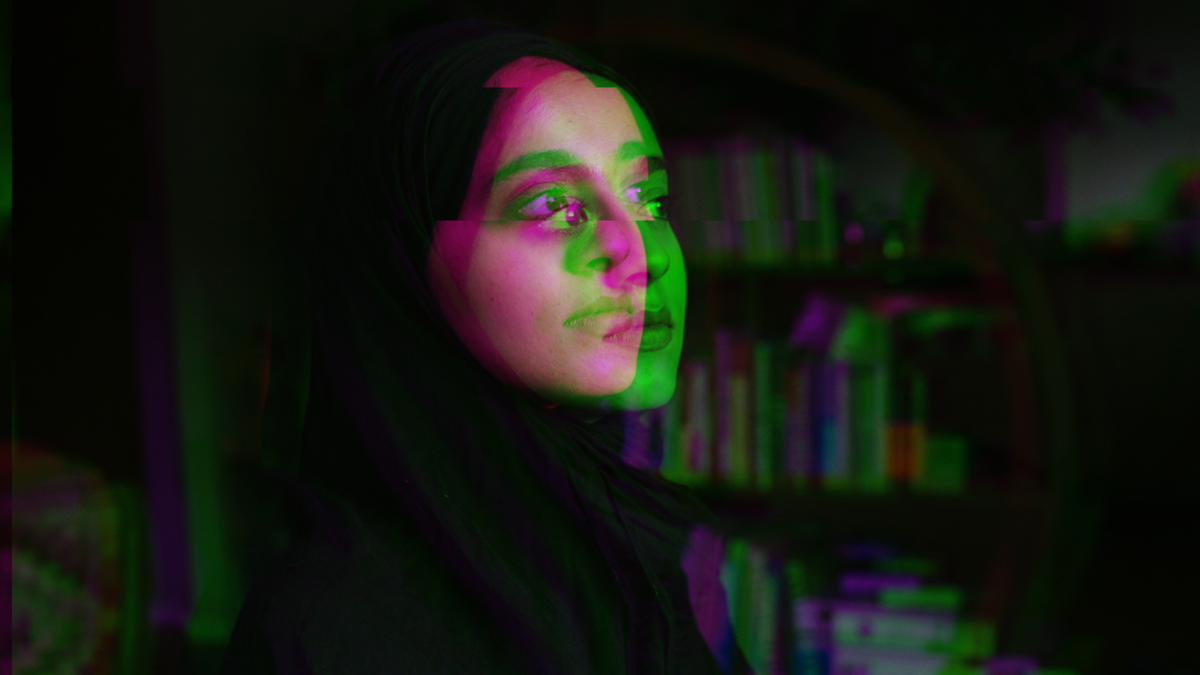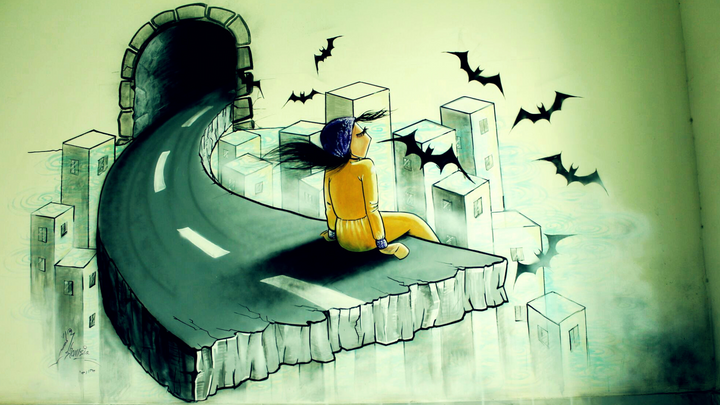The Disturbing Implications of Hijab
The donning of hijab is a public apology for being female.

One of the most controversial discussions that comes out of feminist discourse is the one debating the Islamic headscarf, commonly known as hijab. This discussion is overwhelmingly repetitive and superficial, as it almost always boils down to, "do Muslim women choose to wear hijab?" One side says yes, and the other side says no.
My side says it doesn't matter.
Even if we could realistically assume that the millions of women living in Iran and Saudi Arabia individually chose to wear hijab (despite hijab being required by law in those two countries), it doesn't matter. Even if we suddenly decided that little girls who were born into Muslim families were somehow more mature than girls who weren't, therefore able to fully realize the decision of wearing hijab despite being as young as nine or six or four, it doesn't matter.
Even if every single female human (adult or child) in the world truly and wholeheartedly chose to wear hijab, it still wouldn’t matter.
The reason it doesn't matter is because the idea of choice is only the tip of the iceberg when it comes to the discussion of hijab. Choice was never a question at the time that hijab was created, and it continues to be a non-factor when families and communities make their wives, mothers, daughters, and sisters wear it. When practising Islam, choice is not something that one considers. You don't choose to pray five times a day, you must pray five times a day. Similarly, it is a very common attitude that you do not choose to wear hijab, you must wear hijab.
I believe that if we were to focus on the most imperative point in the discussion of hijab, i.e. the part that does matter, it would be the aspect of implication. Some questions that we can derive when we think about what hijab implies are as follows: What is the meaning of hijab? What does wearing hijab imply about the girls and women who wear it? What does it imply about the girls and women who don't wear it? What are the possible outcomes of an entire community or country that actively pressures girls and women to wear it?
“Entering the cage and swallowing the key is no different than being thrown into the cage and watching the key get thrown out.”
There are two important religious texts that we may examine in order to understand how Islam has mandated its female followers to wear hijab. The first source is the Quran, which is considered the direct word of Allah as it was passed down to the prophet Mohammed through the angel Gabriel.The second source is hadith, which is a collection of events and sayings that happened during the prophet Mohammed's life. Both of these texts date back to the 7th century.
In chapter 24, verse 31 of the Quran, Allah instructs Muslim men to tell Muslim women to be modest and pure by covering their chest with khimar. (Khimar is a more traditional form of hijab that is still worn in some parts of the world.) He proceeds to list the people that a Muslim woman does not need to cover herself from, including immediate family and other women.
As for the hadith, Sahih Al-Boukhari 146 tells a story involving one of the prophet Mohammed's wives. The story goes that one of the prophet's companions recognized one of his wives while she was relieving herself out in the open desert in the middle of the night. When the prophet's companion named the wife and instructed him to cover his wives so that he may not recognize them in the future, the prophet Mohammed received a revelation from Allah which came out to be the Quran verse mentioned above.
From Islamic scholars to cultural Muslims, Muslim men and women are often protective of hijab. They could offer a list of explanations for why hijab is beneficial for women--a gift, even--and, unfortunately, none of these explanations are very convincing. Some argue that hijab is women's protection from strange men, as though the Middle East were some feminist paradise where veiled women were left alone on the street. Others argue that hijab is meant to preserve a veiled woman's beauty for her current or future husband, as though women weren't so much human as they were valuable objects like pearls that must be protected from collecting dust or getting stolen. One of the most egregious arguments in favor of hijab is the claim that hijab forces others to focus on the character of a veiled woman rather than her looks, as though it's a beautiful woman's fault if people don't take her seriously because of her luscious locks or stunning features.
“Hijab single-handedly places all the blame and responsibility on women.”
The “free,” veiled woman who claims that hijab protects her from being harassed by strange men is actively rejecting the notion that men are capable of self-control, and accepting the notion that victims of sexual abuse are at fault for the offences committed against them. (It is important to note that hijab doesn’t have an invisible protective guard around it, and nothing can or does stop men from sexually abusing veiled women.) The “free,” veiled woman who claims that hijab removes the focus on her appearance is acknowledging the notion that women must be altered in order to be heard. (It's a trap like any other, as she is not heard regardless.)
When the prophet Mohammed's companion informed him that he could see his wife urinating out in the desert clearly enough to identify her, the prophet did not tell his companion to avert his eyes and leave his wife alone. Instead, he punished her for his companion’s crime of not respecting her privacy. For centuries onward, Muslim men--from dictators to fathers--used the same approach that the prophet used that day. It seems that Muslim men cannot comprehend the idea of a society that does not allow men to ogle at or grope women as they please without needing hijab to remind them that women are not property. Needless to say, hijab does nothing to challenge this way of thinking.
Hijab is, quite simply, the active practice of rape culture. Hijab single-handedly places all the blame and responsibility on women. Hijab says to the girls and women who wear it: "If you fail to cover your seductive womanly charms, then there's no telling what you will cause men to do to you." The donning of hijab is a public apology for being female, an adjustment of presentation that attempts to stop distracting men who are supposedly just trying to go about their day. It is an admittance that girl's and women's existence provokes men, that the sight of hair or skin transforms civilized, rational, and calm men into rapists and neanderthals.
Furthermore, what becomes of those men who are civilized and tragically fall victim to the uncovered sirens? Does hijab not reinforce this mindset? How does one possibly imagine the kind of man that this attitude creates? When little boys grow up being told that the covered girls and women around them are the pure ones, what are they to make of the women who are not covered? The outcome is men policing women's attire (veiled women are not protected from this) and believing that their testosterone-filled bodies are always on the verge of hurting a woman who, as they believe it, is asking to be hurt. Muslim women often complain about Muslim men's attitudes towards them; the attitude of feeling entitled to women's bodies and dismissive of their voices. Frankly, what other outcome do they expect? Hijab does not demand respect. It is nothing but a code of conduct designed to keep women in their place.
These are the implications of hijab. I can't find it in my heart to care about choice, because the women who do choose to wear it only make me more uncomfortable than the women who do not. Sometimes choice does matter, but it is not the beginning and the end of the hijab discussion. Entering the cage and swallowing the key is no different than being thrown into the cage and watching the key get thrown out. A cage is a cage is a cage, and it is time to break free.
4W provides paid writing work for over 50 women in countries spanning the globe. This work is made possible thanks to our paid monthly subscribers. Join today to support our work!
Enter your email below to sign in or become a 4W member and join the conversation.
(Already did this? Try refreshing the page!)





Comments